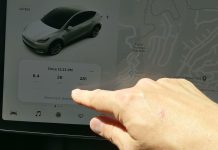Here’s the latest reader question, along with my reply!
David asks: Do you have any recommendations regarding the difference in the dependability of the 2.7 L four or the 3.5 L six, in the 2009 Highlander? The 3.5L comes with a five speed auto transmission and the 2.7 L four comes with a six speed auto. It looks like the 2.7 L four gets about five more miles per gal. Also is there a upper limit of mileage I should be looking at to buy used? PS: I am looking at the FWD model, But at this price point, I might consider the all wheel version, but that is only is offered with the 3.5L engine.
My reply: Both engines have established track records for being generally very dependable and long-lived; as you probably know, they are also used in the Camry – which is considered one of the most dependable/most reliable cars ever made – rightly so.
The thing to focus on here, in my opinion, is that the 2.7 engine is on the small side for the Highlander’s size (and weight). I’ve driven this vehicle with both engines and while the 2.7 equipped version has enough power for urban/suburban “city” type driving, it is under-engined on the open road – and when merging with it. You may find, as I have – repeatedly, with this and other vehicles that offer a smaller standard and a larger optional engine – that your mileage will vary, sometimes a lot. You may, indeed, discover that the difference in mileage between the V6 and the four is essentially nil – because you end up working the four harder than the six to get the vehicle to move. (This is why the AWD system, which adds weight, is not offered with the four.)
So, consider this – and maybe try to test drive Highlanders with both engines, doing the type of driving you normally do, before you decide.
Aber, there is another thing to consider, if you perform your own maintenance. It is that the four is much easier to service because you can get at it easily, from all angles. Or at least, both sides. One side of the V6 – in transverse (sideways-mounted) applications – is much harder to get at because one half of it is mounted close beside the firewall. Also, usually, the rest of it because of the overall size of it relative to the size of the engine compartment.
The four also needs fewer parts (e.g., spark plugs) and so on.
Those considerations aside, there is nothing substantially bad to say about either of these engines – and much to say that is good about them both!
. . .
Got a question about cars, Libertarian politics – or anything else? Click on the “ask Eric” link and send ’em in!
If you like what you’ve found here please consider supporting EPautos.
We depend on you to keep the wheels turning!
Our donate button is here.
If you prefer not to use PayPal, our mailing address is:
EPautos
721 Hummingbird Lane SE
Copper Hill, VA 24079
PS: Get an EPautos magnet or sticker or coaster in return for a $20 or more one-time donation or a $10 or more monthly recurring donation. (Please be sure to tell us you want a magnet or sticker or coaster – and also, provide an address, so we know where to mail the thing!)
My eBook about car buying (new and used) is also available for your favorite price – free! Click here. If that fails, email me at EPeters952@yahoo.com and I will send you a copy directly!











I have an 02 Camry mcv20 v6. The oil filter sits right over the front engine mount, with the thread side facing down. When you remove the filter, you end up dumping most of its oil all over the many twists and turns of the bracket and the stuff underneath. No matter how fast you try to right the filter.